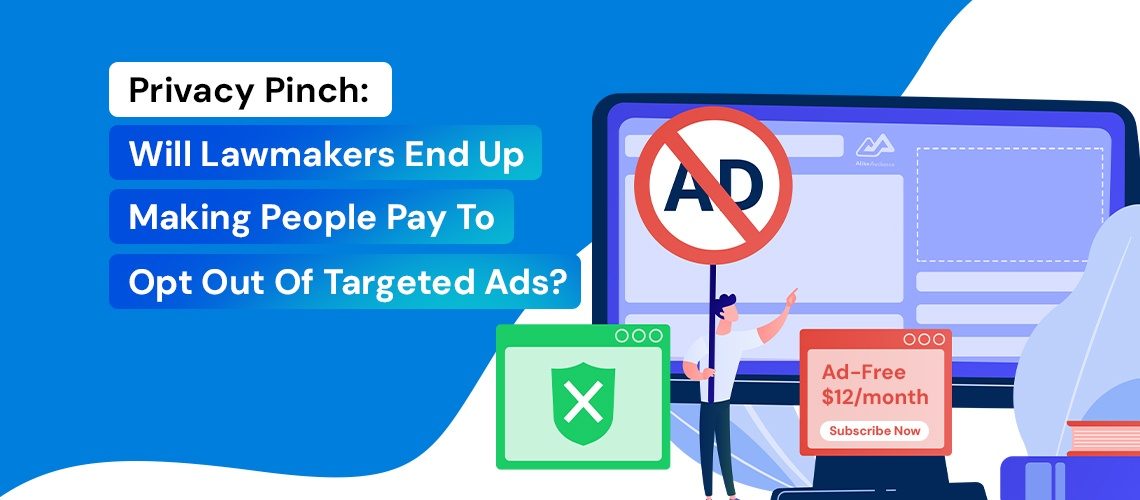Facebook and Instagram owner Meta will charge European users €9.99 a month to use its services on the web and of €12.99 on their phones after the European Data Protection Board banned the firm from using circa 300m people’s data for targeted ads without their explicit consent.
By offering those ad-free subscription services, Meta is banking on its interpretation of EU data protection laws allowing it to continue to operate a free ad-funded service. It argues that those who choose not to pay a subscription are in effect consenting to allow the company to use their data to power targeted advertising in return.
The ruling, and Meta’s reaction, may present a signal for what comes next for digital advertising as lawmakers around the world start to implement long-running overhauls of privacy regulation.
One upshot could be more of the platform majors opting to change a subscription fee for users that do not consent to use ads.
Streaming media companies, albeit initially for different reasons, are already taking a broadly similar approach, with the likes of Netflix and now Amazon charging subscribers more to watch shows without ads. X, the platform formerly known as Twitter, is also planning a two-tiered approach to subscriptions, a cheaper one with ads and a more expensive ad-free package.
The data trade-off

The digital ad industry, spearheaded by organizations such as the IAB, has been working hard to convince lawmakers and regulators of advertising’s economic contribution.
One of the key arguments is that without the vast billions of dollars that pour in from marketers targeting potential customers based on their behavior, ad-funded digital services, i.e. most of the internet, would no longer be viable. In other words, consumers would have to pay to access content and services with hard currency instead of their data.
In countries such as Australia, which is now coming to the pointy end of a major Privacy Act overhaul, the local IAB chapter has suggested ad-funded services add AU$94bn Australia’s GDP, equating to more than AU$3,500 per capita. In the US, the IAB has suggested the value of the internet in 2020 was $2.45 trillion, with its CEO David Cohen urging regulators to understand how proposed data privacy policies risk undermining the broader economy (and IAB member business models).
In the meantime, US states have taken digital privacy laws into their own hands. California moved first but others are following fast, with four state-specific acts – Colorado, Connecticut, Utah, and Virginia – coming into force this year alone. Over the next couple of years, similar legislation governing data privacy in Indiana, Iowa, and Tennessee will follow suit. All require businesses to allow consumers to opt-out of targeted advertising and personal information sales.
Content is king
Presented with an increasingly fragmented patchwork of policies, it may be that multinational brands and advertisers move towards the least risk approach, i.e. adopt the most rigorous and stringent policies to comply across all geographies in which they operate.
In all of this, consent is key.
If brands, publishers, platforms, and the digital ad supply chain are basing targeted advertising on informed explicit consent, there is no problem. The problem is that to date, that has not necessarily been the case, especially when multiple parties are involved in the chain – and the adtech supply chain between the consumer (and their data), publisher and advertiser, has a ton of component parts.
That may meanuse of data that cannot be verified as consented becomes an increasingly challenged business model, with brands and publishers now racing to build our first party data and consent to use it from customers and/or audiences.
Hence the rise of loyalty programs – and the resulting boom in retail media businesses built off the back of those programs.
Seeking consumer apprioval for the use of their own personal data has also led to the rise of consent management platforms (CMPs) and data clean rooms (DCRs). CMPs tell people how their data may be collected, processed, and sold, which companies wish to do the processing/storing/selling – and allows them to make choices around that, thereby enabling consented first party data to be passed through the ad supply chain onto third parties.
Data clean rooms essentially allow brands and publishers to match their customer and audience data without identifying them and keeping supply and demand-sides on the safe side of privacy regulations.
Pay to play?

While data clean rooms can enable multiple parties to do what they need to do amid a privacy pincer movement, they are not a perfect solution, with issues around standardization and interoperability, not to mention data quality, with outputs and outcomes only as good as what goes in.
Perhaps a more interesting question is what value people put on their data. A report by Boston Consulting Group (BCG) suggests almost half of those it surveyed are uncomfortable sharing their data to receive personalized ads. It will therefore be intriguing to see how many of the circa 300m Meta users in the EU actually pay to stop the platform using their data to power its ad business. The €160 a year the company plans to charge to access Facebook and Instagram via phones may prove a higher price than many are willing to pay.
However, the BCG report also found that some people are willing to hand over personal information, such as an email address, an identifier which underpins alt-IDs such as those being developed by the Trade Desk-led initiative UID 2.0, for relatively little hard value in return.
This was particularly true for younger people (Gen Z respondents were willing to share an email address for $5-$10), new parents ($10-$15) and value shoppers ($0-$5). But wealthier and retired people wanted much higher reward in return for an identifier like an email address ($25+) – and some wouldn’t trade it at all.
Which poses an interesting conundrum. If allowing consumers to opt out of targeted advertising and trading of their data undermines the economics of the ‘free’ open web, how do publishers and the digital supply chain convince people that their services are worth the trade-off?
Meta’s experiment might provide some answers. Coincidently, the one big tech player that has made its users expressly opt-in to allow tracking across apps, Apple, has just posted record ad revenues.


